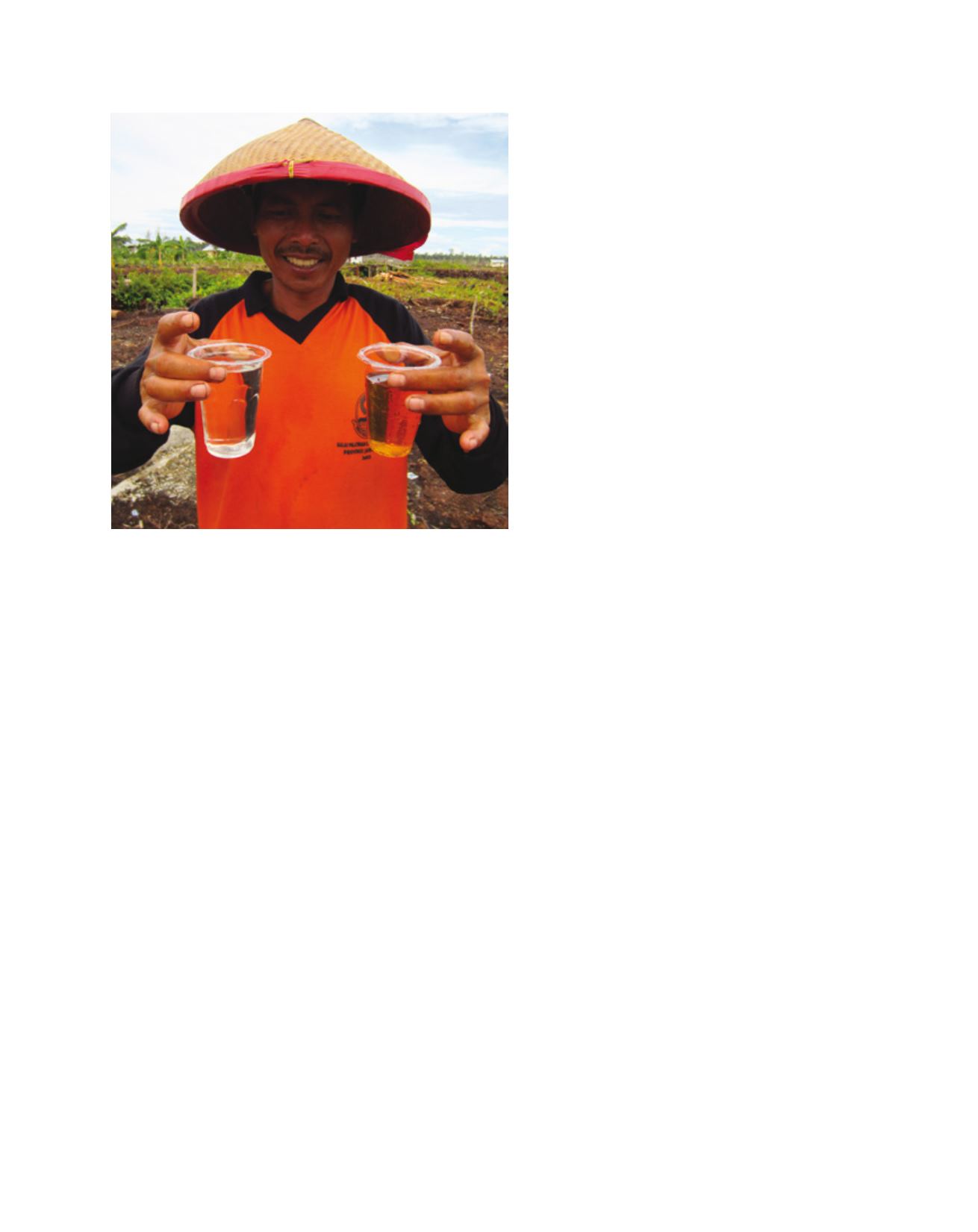

[
] 191
W
ater
C
ooperation
, S
ustainability
and
P
overty
E
radication
IPAG60: alternative technology for clean water in
peatland areas
Indonesia’s attention to the issue of environmen-
tal damage is increasingly intensifying. One cause
of the worsening environmental conditions is the
management of natural resources that either cannot
be renewed or that are renewable but have exceeded
their capacity. Environmental sustainability and
ecosystem levels have not been maintained and the
parties involved – in this case, the private and state
enterprises, governments and communities – need to
develop good cooperation and synergy for sustainable
environmental management.
If the quality of the social life of the community in
question is good enough, then its ability to support
environmental conservation programmes will be
better. Regional development in buffer zones and
transition areas should be done to create economic
activities that benefit the community in the region in
order to preserve and protect the core area. Activities
undertaken include the development and application
of appropriate technologies that can meet the basic
needs of communities around the reserve, including
water supply and other economic resources. Economic
development implementation programmes in buffer
zones and transition areas are expected to balance the
interests of conservation with the economic interests
of the development of biosphere reserves.
The majority of areas in Riau Province and Central
Kalimantan Province have land with peat surface water,
which characteristically has:
• low pH levels (2-4), making it highly acidic
• high levels of organic matter
• high levels of iron and manganese
• yellow or dark brown colour.
This kind of surface water is basically not suitable
as raw water for drinking. Compared with freshwa-
ter surface water, the water from the turf needs to be
processed specifically through several additional stages.
Improving the efficiency of water treatment plants
requires a review of potential issues that may arise in
every phase of the water treatment process. Meanwhile,
the first phase of the IPAG60 research activity aims to
conduct field observations in order to determine the
location of IPAG and to learn about the readiness and
willingness of local communities to adopt appropriate
technologies that will be implemented.
Peat water treatment technology that has been estab-
lished in previous studies (2009-2011), by Ignasius D.A.
Sutapa and team enables peat areas to have peat water
treatment facilities for the drinking water supply. During
the implementation and testing of the water treatment
facility, this is limited to the area of Katingan, Central
Kalimantan province. However, a lot of territory in some
areas in Indonesia – especially Sumatra and Kalimantan
– have clean water source issues. Implementation of this
technology in the wider area is necessary to support the
increase in water services in the region.
together shaped the landscape over the past thousand years and
are an integral part of religious life. Rice is seen as the gift of God,
and the subak system is part of temple culture. Water from springs
and canals flows through the temples and out onto the rice paddy
fields. Water temples are the focus of cooperative water resource
management by a group of subaks. Since the eleventh century the
water temple networks have managed the ecology of rice terraces
at the scale of whole watersheds. They provide a unique response
to the challenge of supporting a dense population on a rugged
volcanic island.
In total, Bali has about 1,200 water collectives, and between 50
and 400 farmers manage the water supply from one source of water.
The property consists of five sites that exemplify the interconnected
natural, religious and cultural components of the traditional subak
system – where the subak system is still fully functioning, where
farmers still grow traditional Balinese rice without the aid of fertilis-
ers or pesticides, and where the landscapes overall are seen to have
sacred connotations.
The subak is a mixture of different units:
• Technologically, it includes a dam and an intricate system of
collectively owned irrigation canals
• Physically, it comprises all rice terraces within clearly
defined subak boundaries. These boundaries are defined by
all rice fields which receive irrigation water from the subak
irrigation infrastructure
• Socially, it consists of all farmers who cultivate land within
the subak boundaries and receive water from the subak
irrigation infrastructure
• Religiously, it includes ceremonies on individual, subak and
inter-subak levels. The ceremonies are linked to a hierarchical
order of water temples which play an important role in the
coordination of irrigation water and pest management.
1
Clean water produced by local people using IPAG60
Image: APCE


















